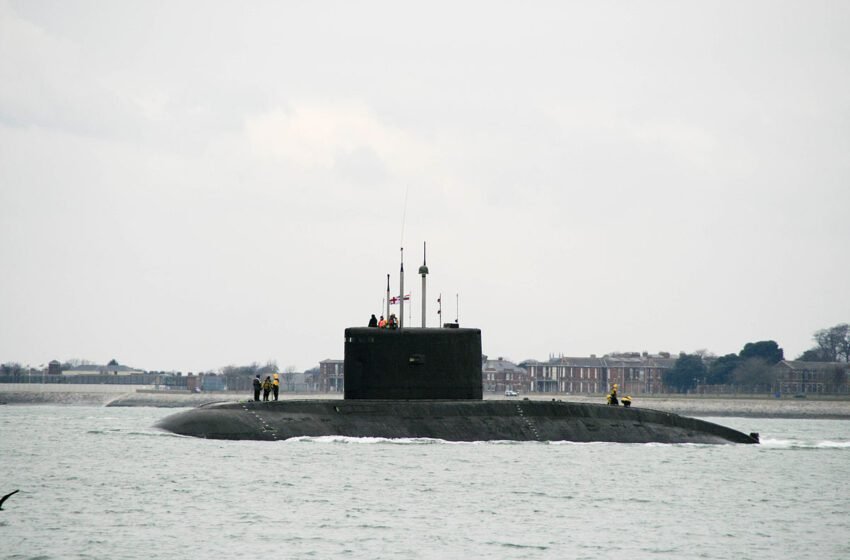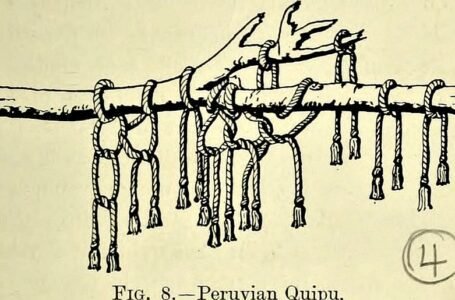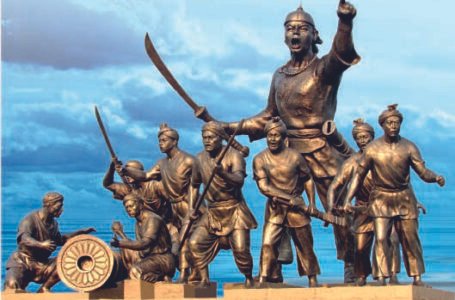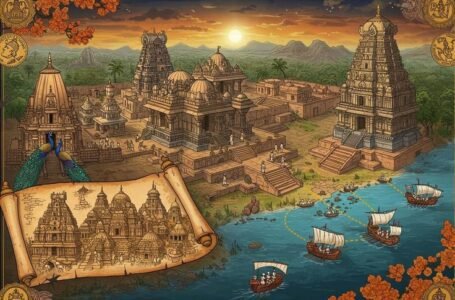Beneath the Surface: India’s Forgotten Sanskrit Submariners of WWII

-Vani Mishra
India is remembered for the two million soldiers who joined the colonial Indian Army, but the country’s history is far richer. About diesel and electric submarines which were used in the second world war, we often recall German U-boots stalking the Atlantic or the American fleet patrolling the Pacific. Indian’s silent contribution towards underwater engineering during the world war is often overlooked. This captivating tale involves India’s deep-rooted Sanskrit. Sanskrit, which is associated with the ancient Vedas, philosophy, valves and propellers, is what this article aims to unfold.
The Underwater Imperative
During World War II, the Indian Ocean became strategically important because of the rise of Germany and Japan. Allied shipping routes were a major threat to German and Japanese U- boats. Armed German U-boats and Japanese I-class subs patrolled the waters from Madagascar to the Bay of Bengal. This was detrimental to the whole system, and action was promptly required.
The British discovered there was a substantial need for additional submarine naval repair facilities, and they chose to increase naval base operations in India. They identified Mumbai, Kochi, and Visakhapatnam for submarine servicing ports. The British also learned that building port infrastructures were not sufficient. Skilled Engineers also created crucial strategic combat technologies through submarine warfare.
Amidst the increasing demands of naval warfare, an elite group of Indian engineers and naval trainees were selected to be introduced to basic submarine concepts and technologies. These engineers and trainees came from prestigious schools, including Indian Institute of Science, Benares Hindu University, Madras Engineering College, and other technical colleges. Even with a lack of naval experience, their ingenuity and quick learning made underwater precision guidance systems possible.
What is the Meaning Behind Sanskrit Submarines?
Sanskrit Submarines is a term that comes from an old notion about India building advanced submarines and relates to patents and utilizations of infrastructure resulting from engineers prior WWII.
During his theorizing, S.R. Narayan Iyer began describing engines into the margins of Sanskrit manuscripts. With a similar mentality, Iyer wasn’t the only one academically. One of the more famous Engineers from Calcutta is rumored to have recited Sanskrit couplets while explaining concepts such as aerodynamic balance and compression of air.
Because of a blend of mysticism and engineering, prodigal minds were bandwidth Builders traditionally branded as ‘Engineering Gurus’ were so entwined into components like Nature and Spirituality that they broke all existing boundaries of contemporary and antiquated ideas.
Such peculiar amalgamations of creativity and logic sparked fascination and taunt that inspired British officers. From here, ‘Kumari Submarines’ was coined. ‘Kumari’ is name associated with something mystical that does not have a defined source and remains unexplained.
Did They Actually Build Anything?
The answers for allegations regarding construction of submarines still remain undercover. It is evident, alongside accruing new ideas to broadly create devices, the traditional ways were absorbed through philosophy, thus the question still lingers, how did they actually contribute?
While not constructing submarines, these engineers were integral to the Allied submarines fleet maintenance in South Asia. The engineers had a specific role pertaining to the maintenance of the submarines. Their duties involved repair of diesel-electric engines on the submarines stationed at Bombey and Cochin. Overhauling worn-out propeller shafts and rudder alignment for deep sea navigation sitting. Local corrosion control metallurgy tropical marine dealt with some corrosion. They even assisted in baseline depth charge calibration and sonar primitive modification and fundamental sonar adjustments. British officers stealthier fuel oil and pipeline systems were being developed and helping during crew changes. Balast system dry dock airlock compartments also required constant attention.
Subterranean creativity
Some of the most classified work emerged from Visakhapatnam. Here the port served with a docking bay dry dock where working submarines returned from Southeast Asia would require quick inspections and repairs. One of the more innovative efforts came during a shortage of British made compressor valves. Indian engineers devised replacements using rubber sourced from Kerala report.
The Unsung Heroes
It was many hands that made the submarines successful. Since then we have had a Bengal mechanical engineer Haripada Mitra, who was attached to a British submarine that had done a cobbled jerry air lock seal which worked and became standard for three British submarines, a Punjab guy Mehar Singh who had a mind which allowed him to rewire depth charge systems under live firing condition at Bay of Bengal during a crisis and a Lakshmi Swaminathan, of the rare women engineers, who was found at the Bombay naval chemical lab. Studying methods for preserving electrolyte to alzheimer’s, she increased battery life for diesel-electric subs. They were not Navy officers, and the vast majority never fought in a war. But their intellectual work and ingenuity were equally crucial to the war effort.
Why These Hero’s and Their Stories were Forgotten
Independent India had more to worry about: like rebuilding the economy, constructing new military institutions and maintaining territorial unity. They didn’t fit well into the nationalistic story line of Indians putting in labor under British command, especially in technical fields. And ancient Sanskrit knowledge being mixed up with modern engineering was just the kind of thing that was distrusted in the mid-20th century, when the elite science institutions of India were trying to distance themselves from anything unscientific. Thereby, the achievements of these engineers faded away. Up until recently, there had been no official recognition of their war service.
Conclusion
But the tale of the “Sanskrit Submarines” is not strictly a submarine story. It is the story of a generation of Indians who mixed ancient wisdom with modern science, in intolerable conditions, and for a global cause even without orders or acknowledgement.
They toiled in darkness, underwater and off the pages of conventional history and out of the limelight. Today their legacy endures deep in the steel of India’s submarines, the ethics of its engineers and the amalgamation of tradition and innovation. Now, as India stakes its claim as a 21st-century maritime power, it is worth recalling these pioneers, not just for what they accomplished, but for how they imagined, built, and contributed when no one thought they would. If you are responsible facts addict, it is our duty to not let the fact ship sink in.


